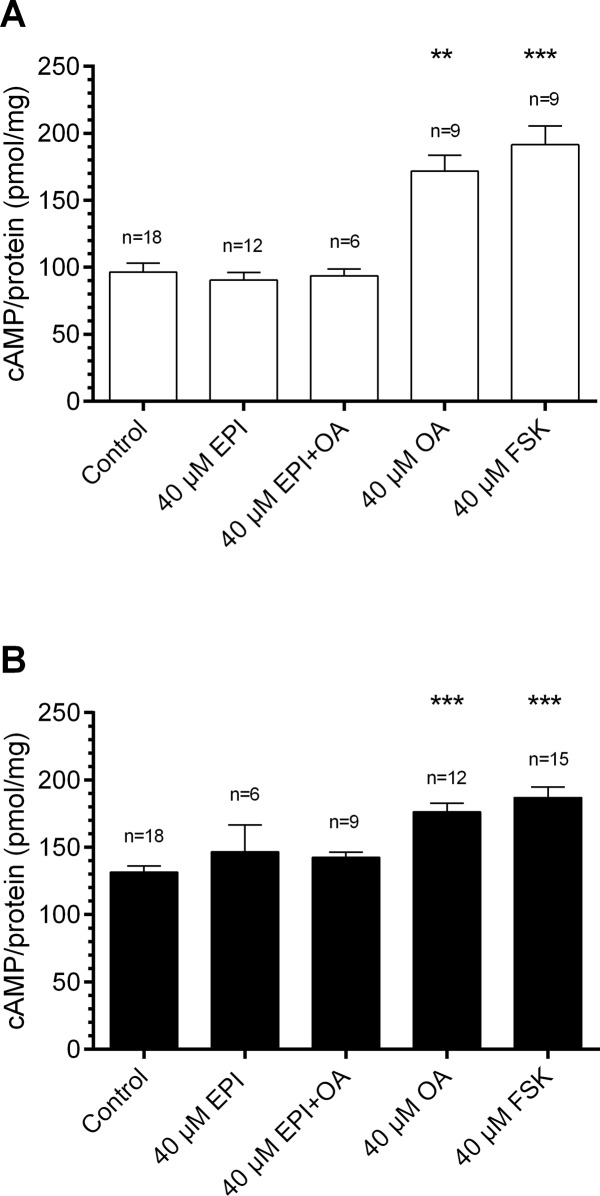Fig 4. Octopamine (OA) increased cAMP levels in ELISAs of M. sexta antennae significantly at Zeitgebertime (ZT) 9 (A) and ZT 20 (B).
Antennal lysates were stimulated with no drug, 40 μM epinastine (EPI, OA antagonist), 40 μM EPI and OA, 40 μM OA or 40 μM forskolin (FSK, adenylyl cyclase activator), respectively (n = 1 contains 6 antennae). At both ZTs tested 40 μM OA and 40 μM FSK increased cAMP levels highly significant compared to controls (ZT 9: OA, 169.4 pmol/mg, n = 9; FSK, 191.7 pmol/mg, n = 9; ZT 20: OA, 179.8 pmol/mg, n = 12; FSK, 186.9 pmol/mg, n = 15; Dunn’s post hoc test, ** p < 0.01). Co-application of EPI prevented OA dependent cAMP increases. Baseline cAMP levels were higher at ZT20 (A, 131.6 pmol/mg, n = 18) compared to ZT9 (B, 96.3 pmol/mg, n = 18) and could not be reduced via EPI (ZT 20: 146.6 pmol/mg, n = 6; ZT 9: 90.5 pmol/mg, n = 12).

